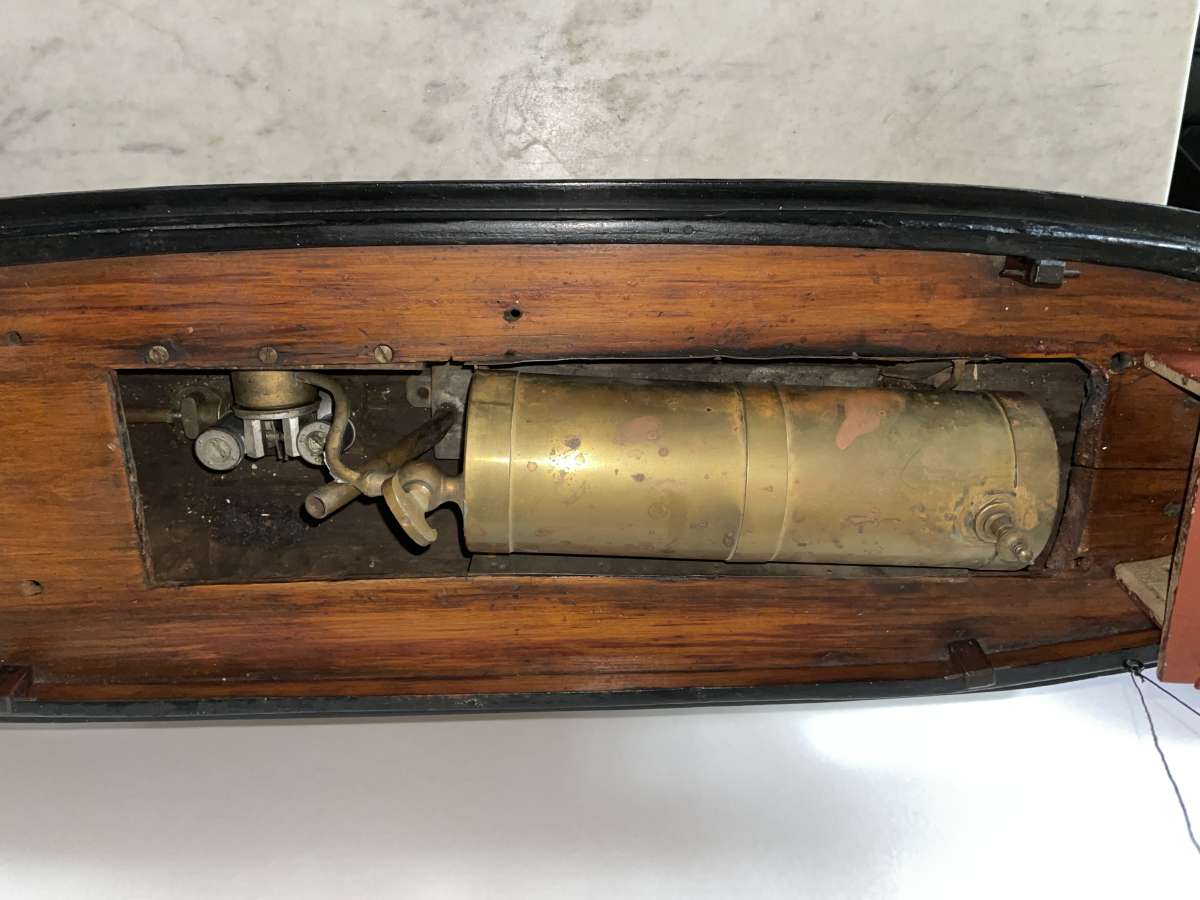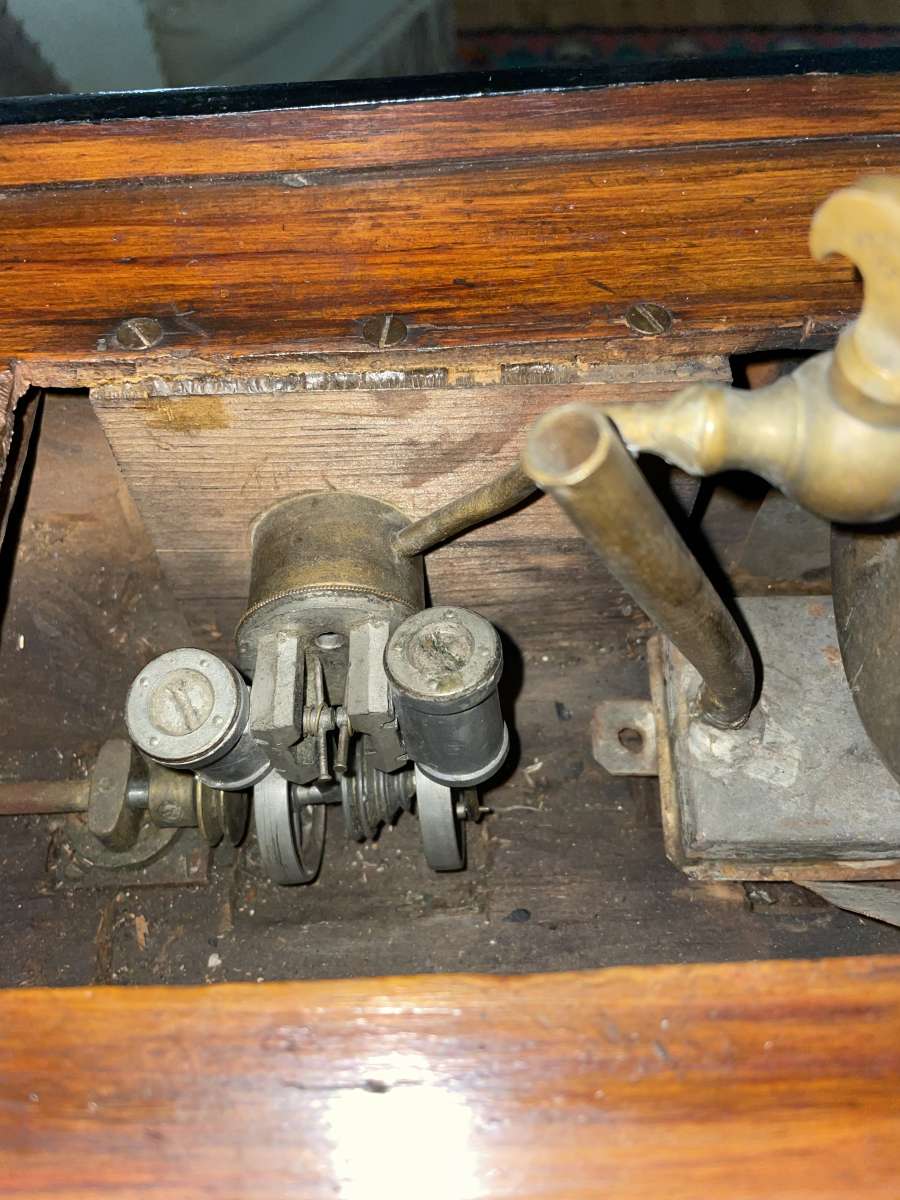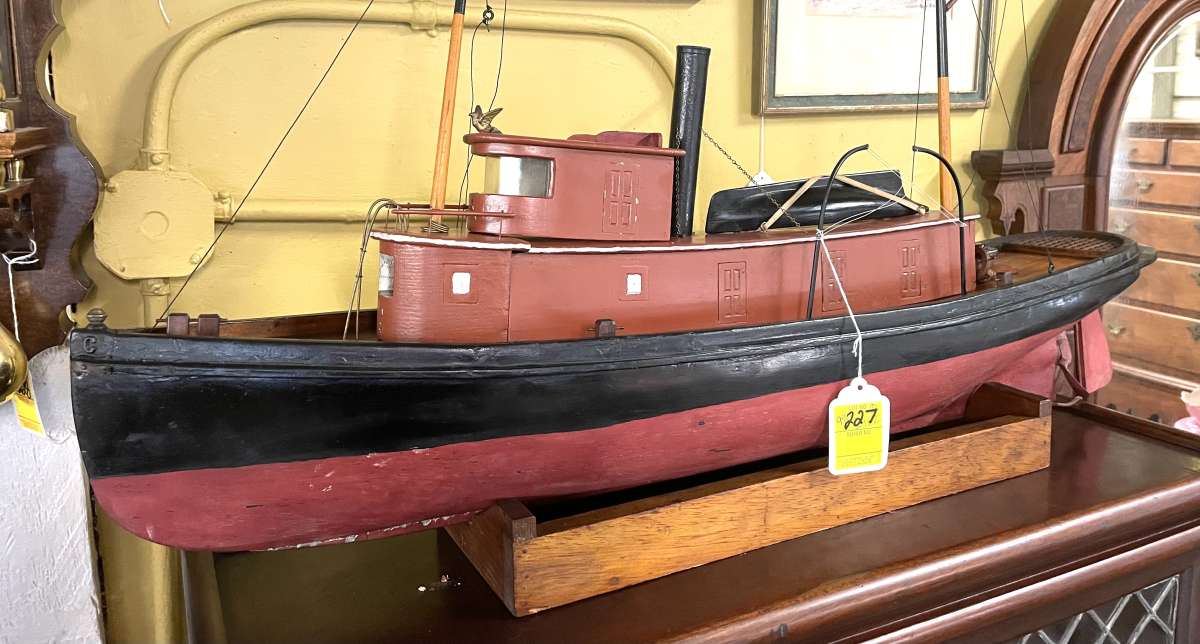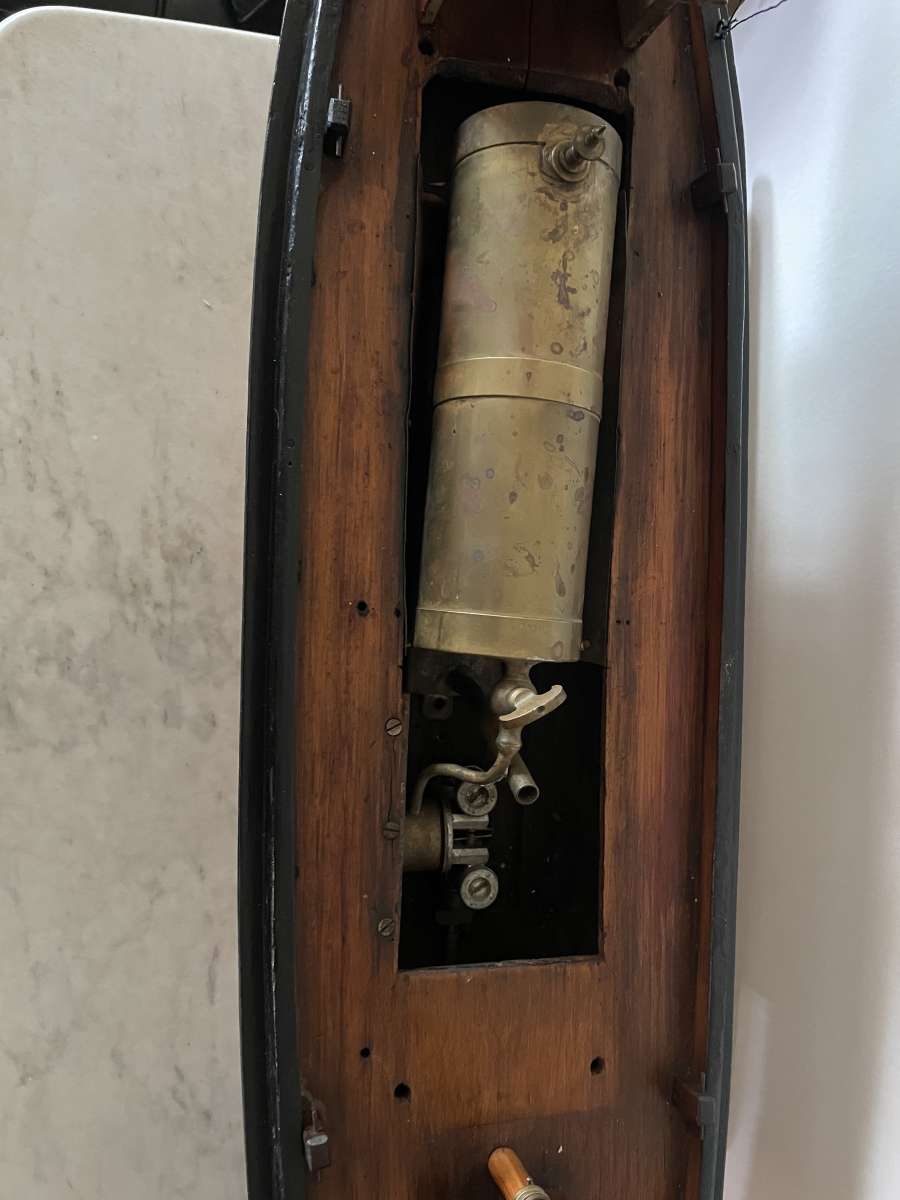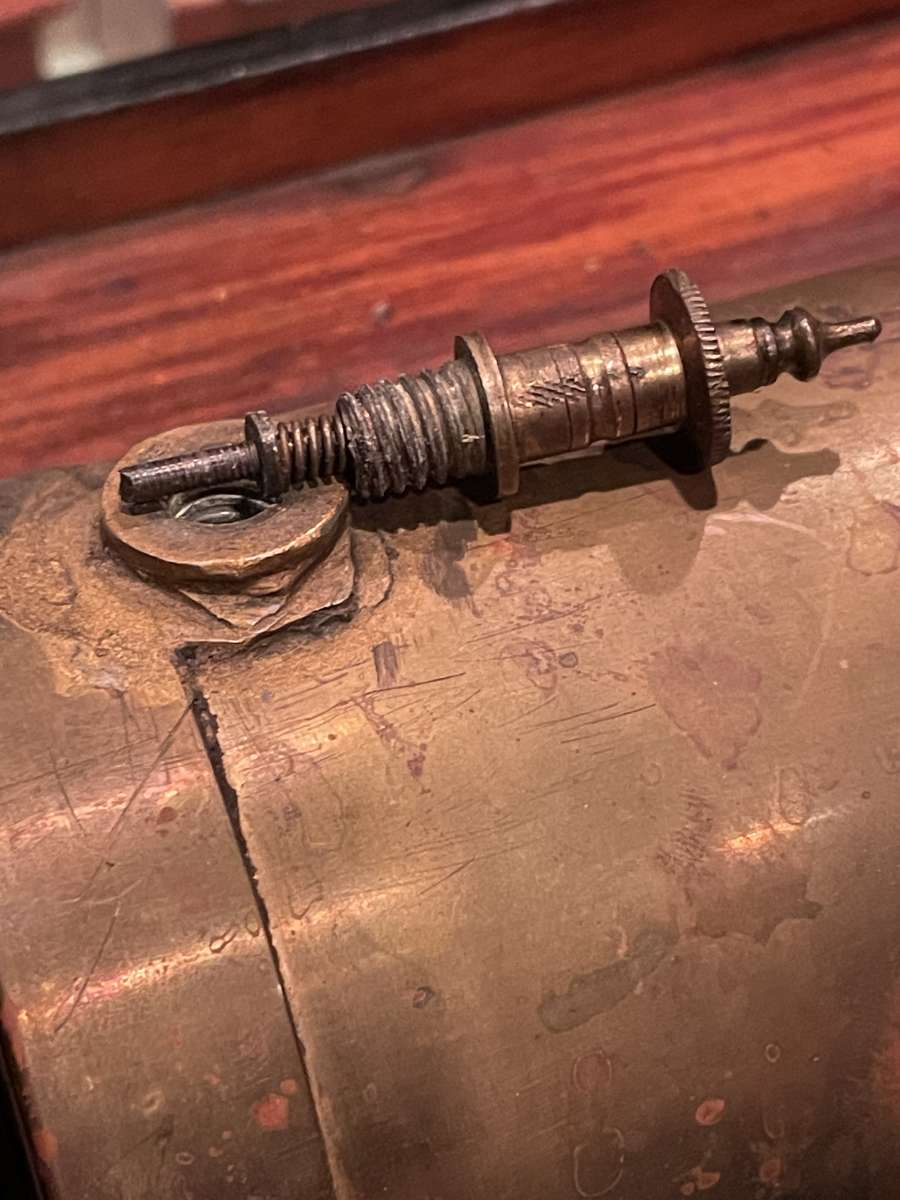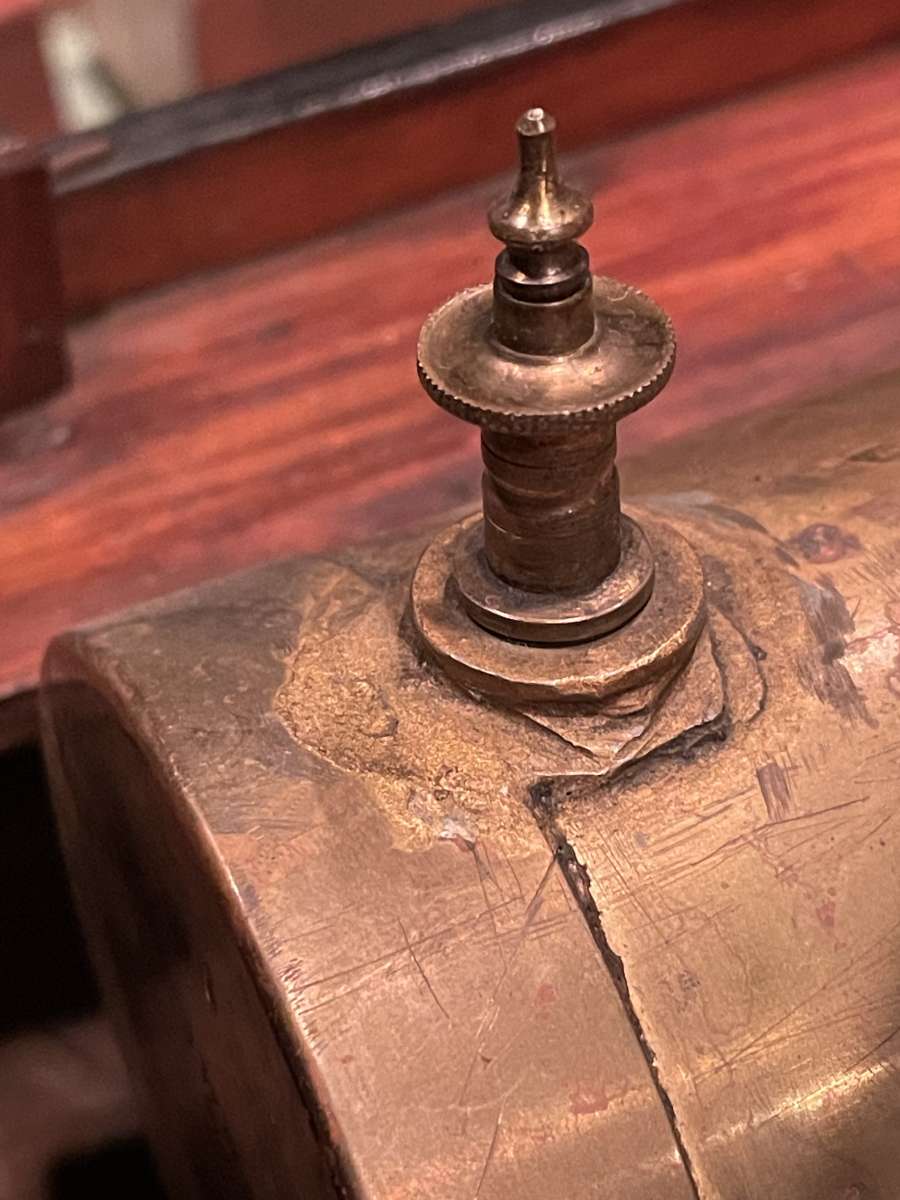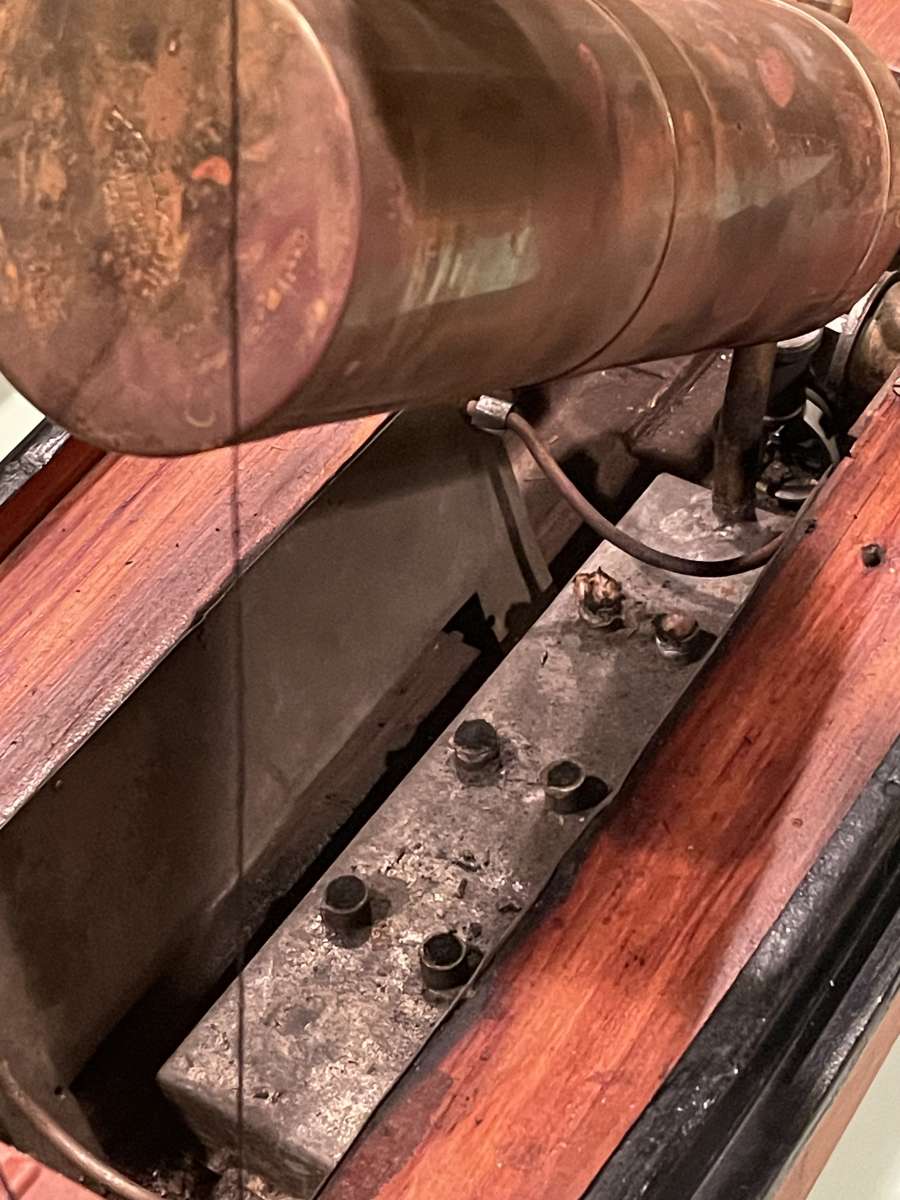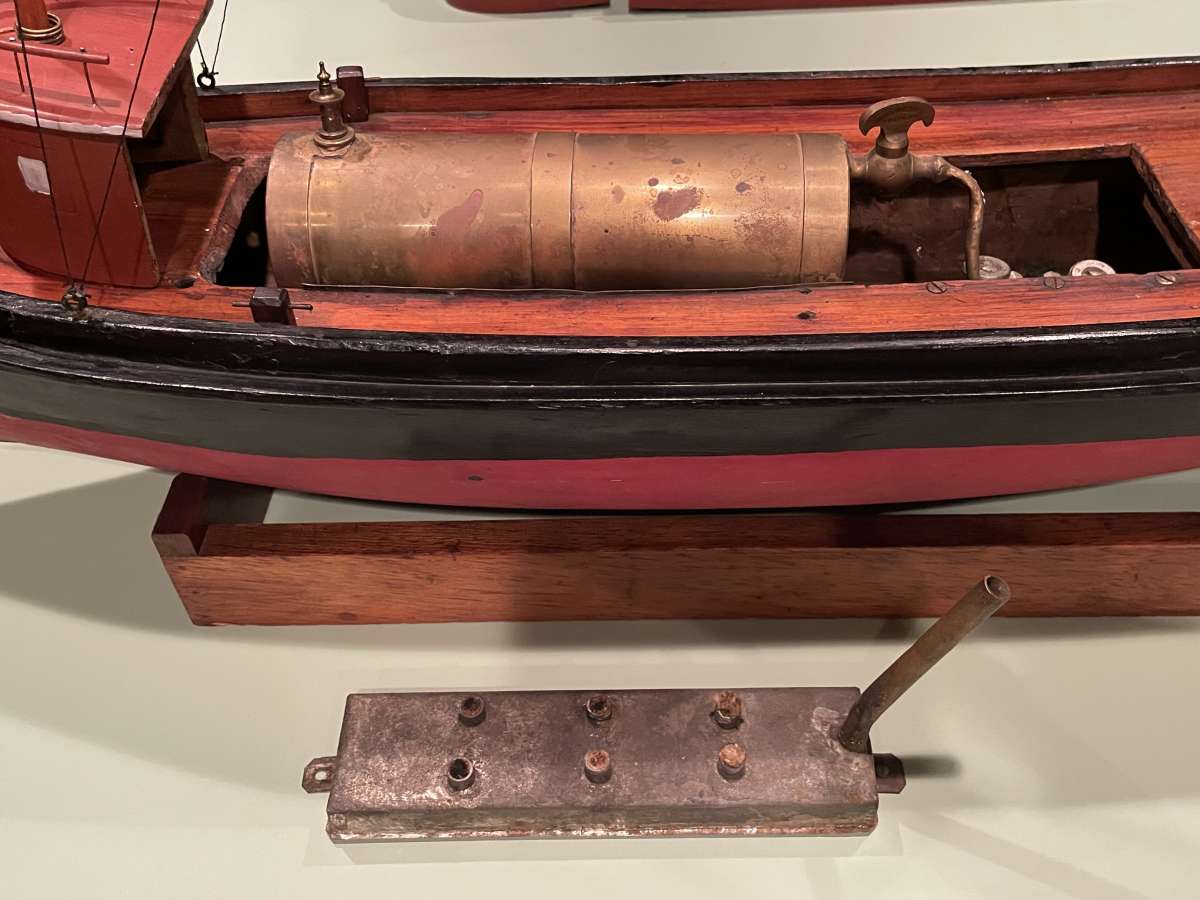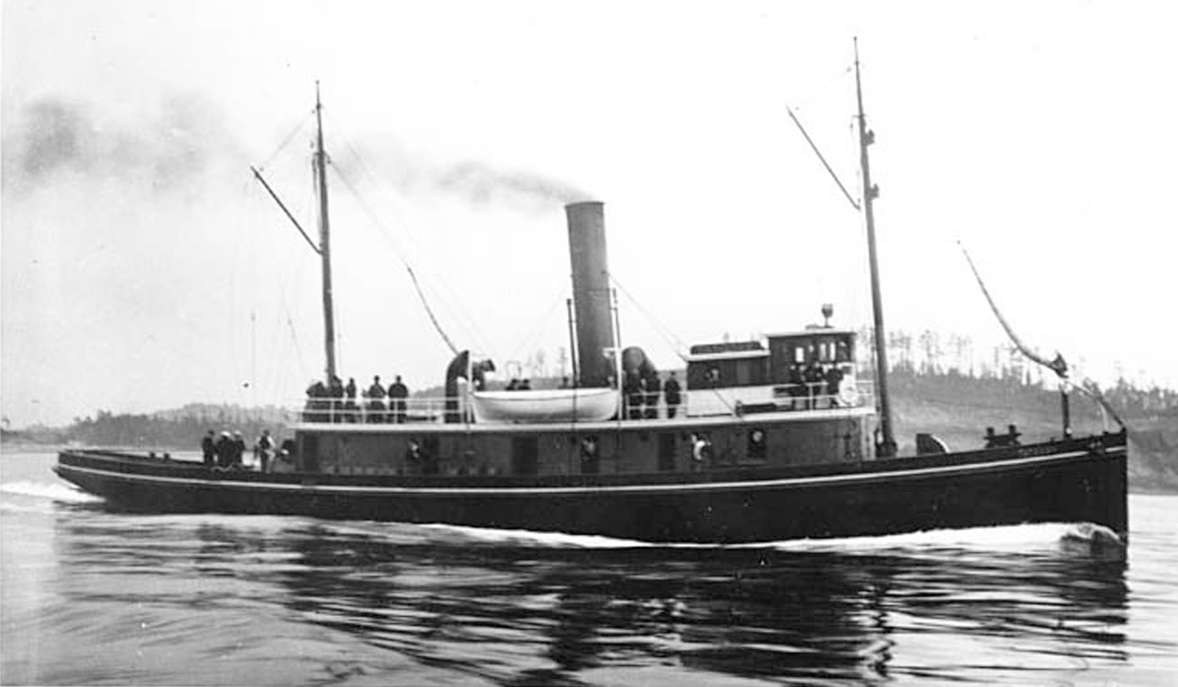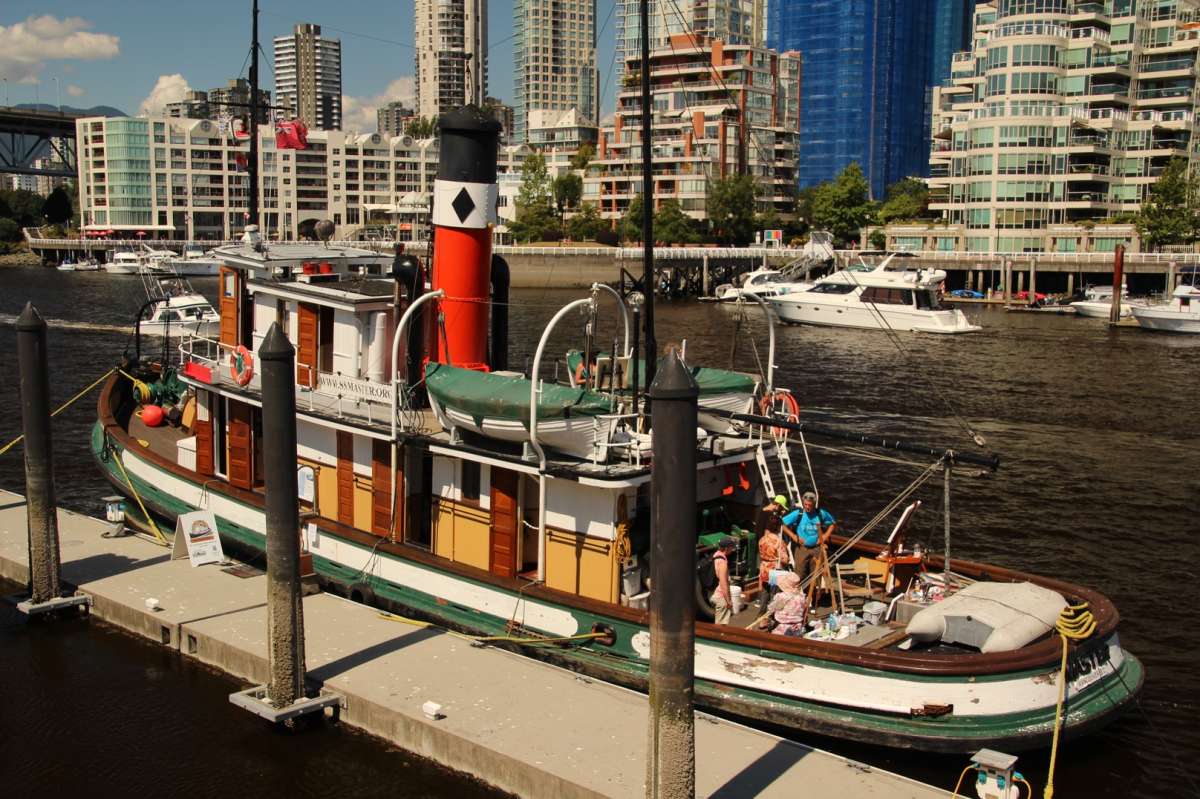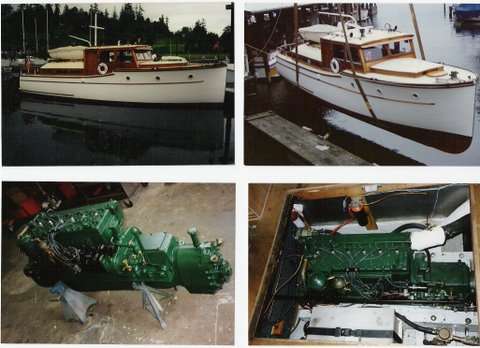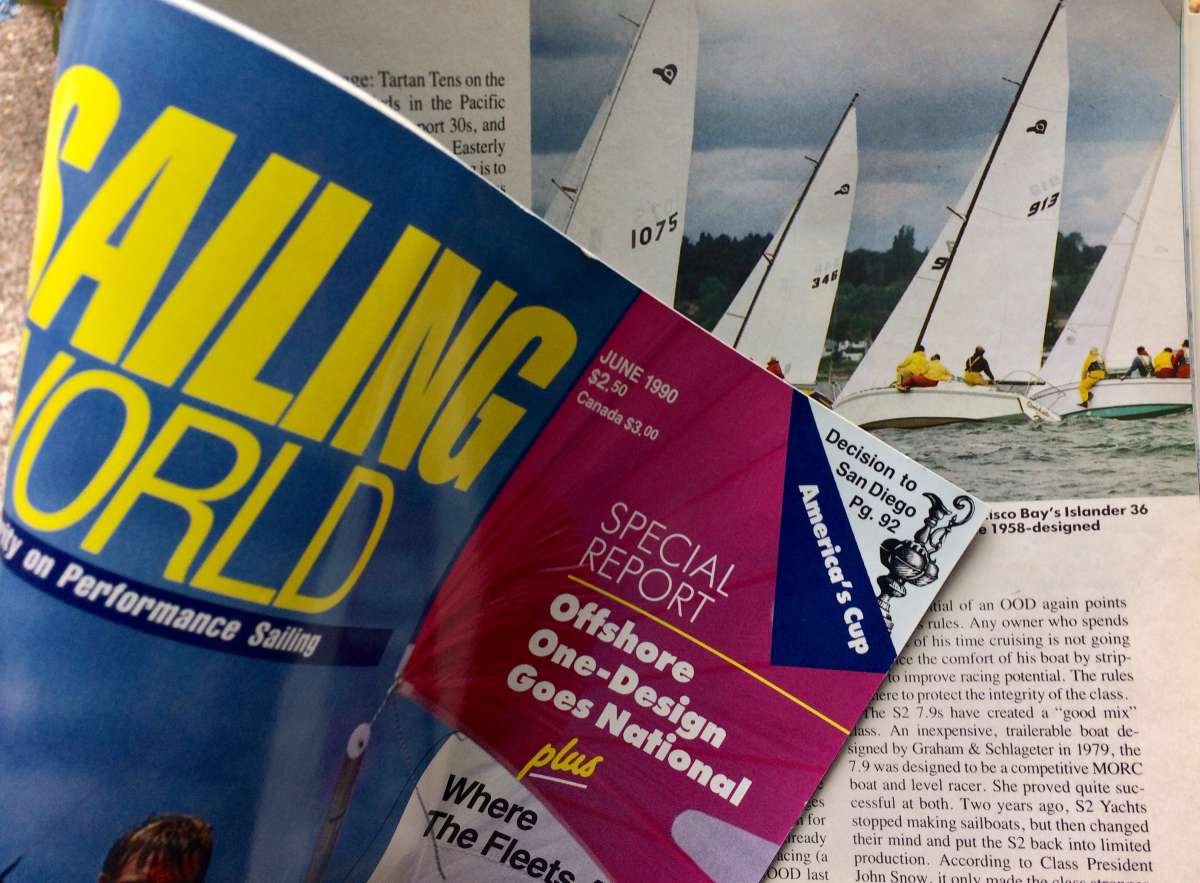Richard and Len,
Indeed there isn’t a lot to go on here, just recognizing “it is what it is”. But that is exactly what caught my attention, a hand carved and shaped hull with extra patina. I appreciate your perspective and insights as to what I may expect if I actually get the boiler and engine to run at all. I did my best to research the two markings. The brass tank is stamped “J.W.R. Laxton, Hartford Connecticut. The internet coughed up J.W.R. Laxton as an inventor of amalgamating equipment. The other marking “McNab & Harlin Mfg. NY” is on the thumb-turn valve that would adjust the pressure to the engine. I found a history of this company as a manufacturer of fire extinguishing equipment such as fire hydrants. Did you notice the finial screw with the spring relief mechanism, it is adjustable, the small diameter stem is threaded to move the spring washer up or down to adjust the release pressure. Nothing telling to go on here.
Your estimated value of such an example was right on the money. I paid $200 for this beauty (ha ha) and I am very enthusiastic to see what I can make of it. My thought today is that it is an optimistic notion I could get the steam plant and engine suitably running (considering my less than novice experience). More pragmatic though, converting to a modern battery powered motor and RC for rudder control would get me closer to sailing it on the water.
Incidentally I looked at a couple posts by you and Len, I am truly amazed at the design and execution of workmanship that I saw in the projects you’ve done. Just astonishing!
Just a few more photos for the record…to show the hand chiseled solid wood hull and aged patina. My thought is to refurbish or rebuild what is necessary while preserving its original character. I’m retired at age 70 so there is no hurry on my part.
Thanks for your time and considerate feedback on my first model boat project!
Jim Mounts
Portland, Oregon
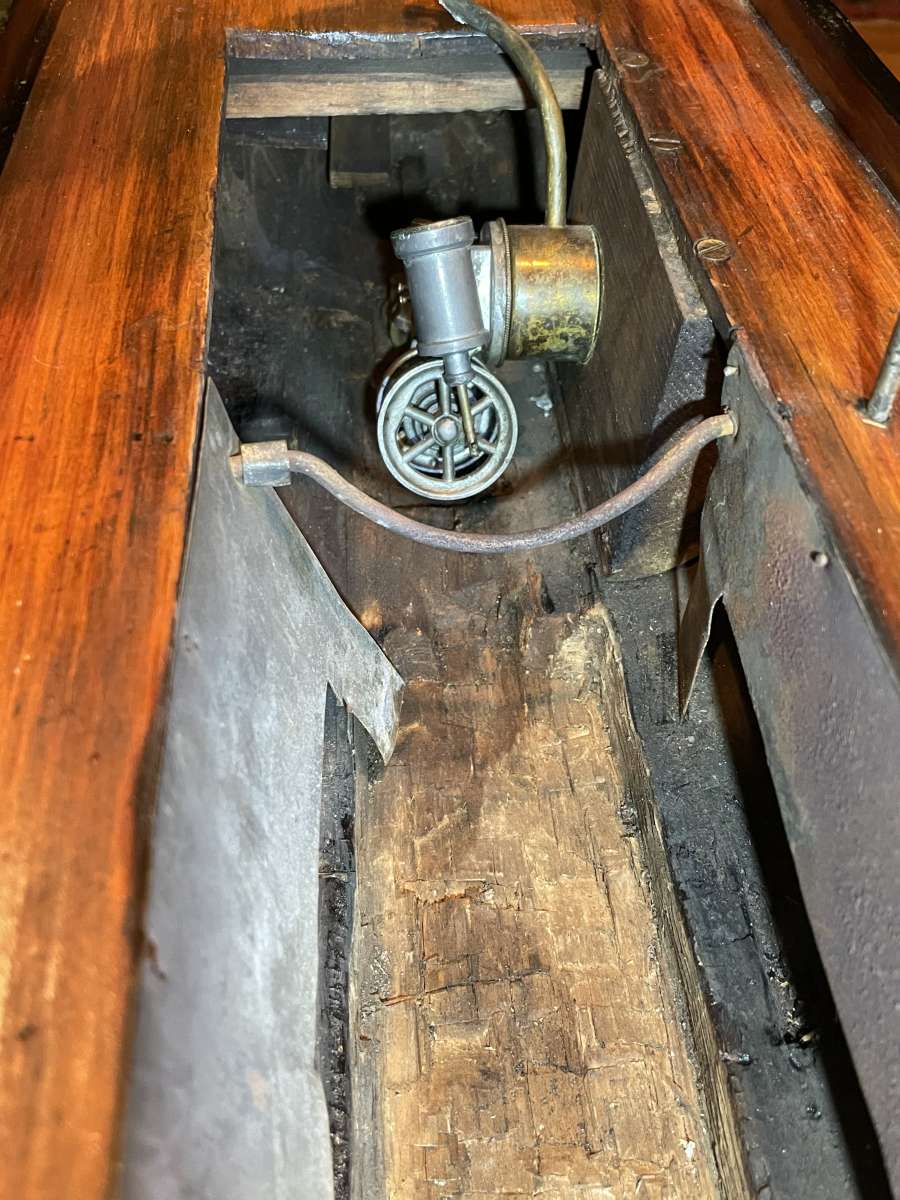
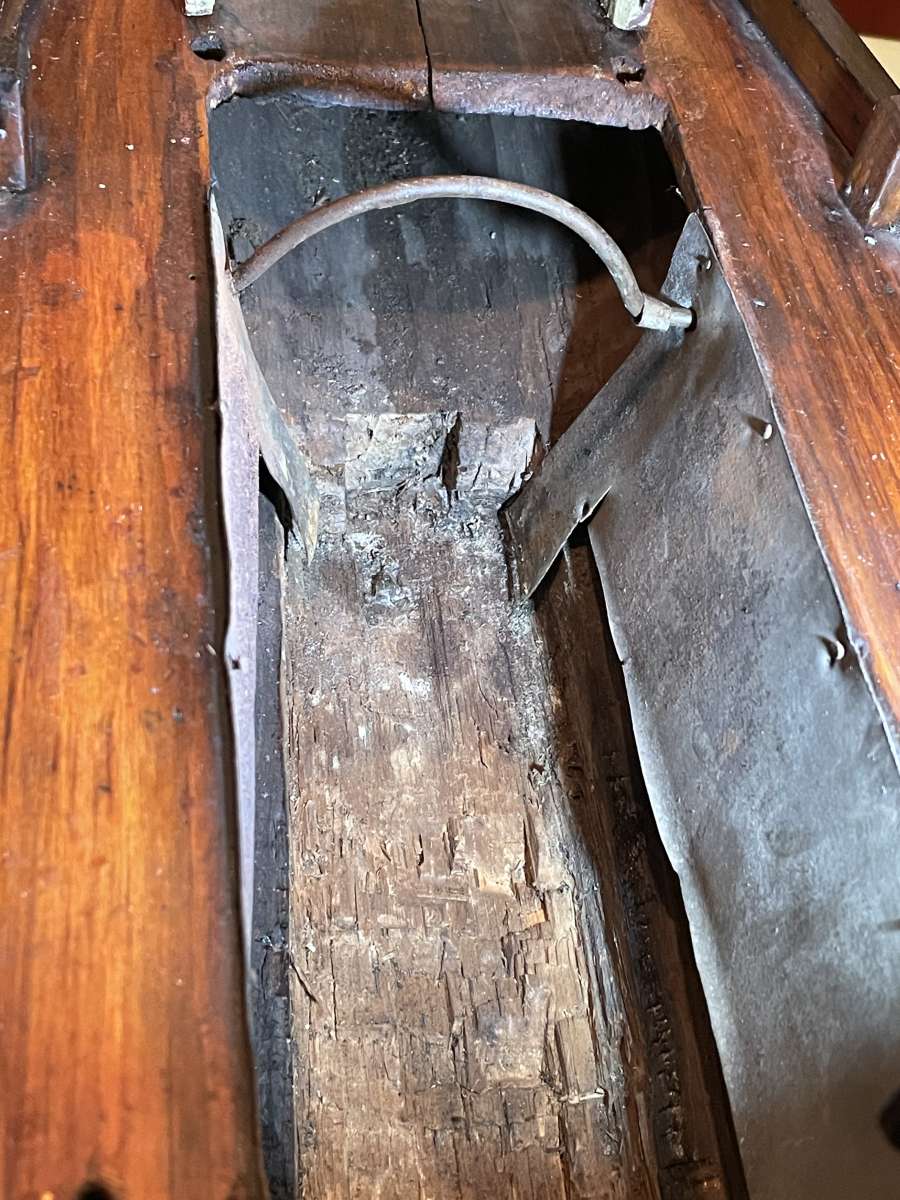
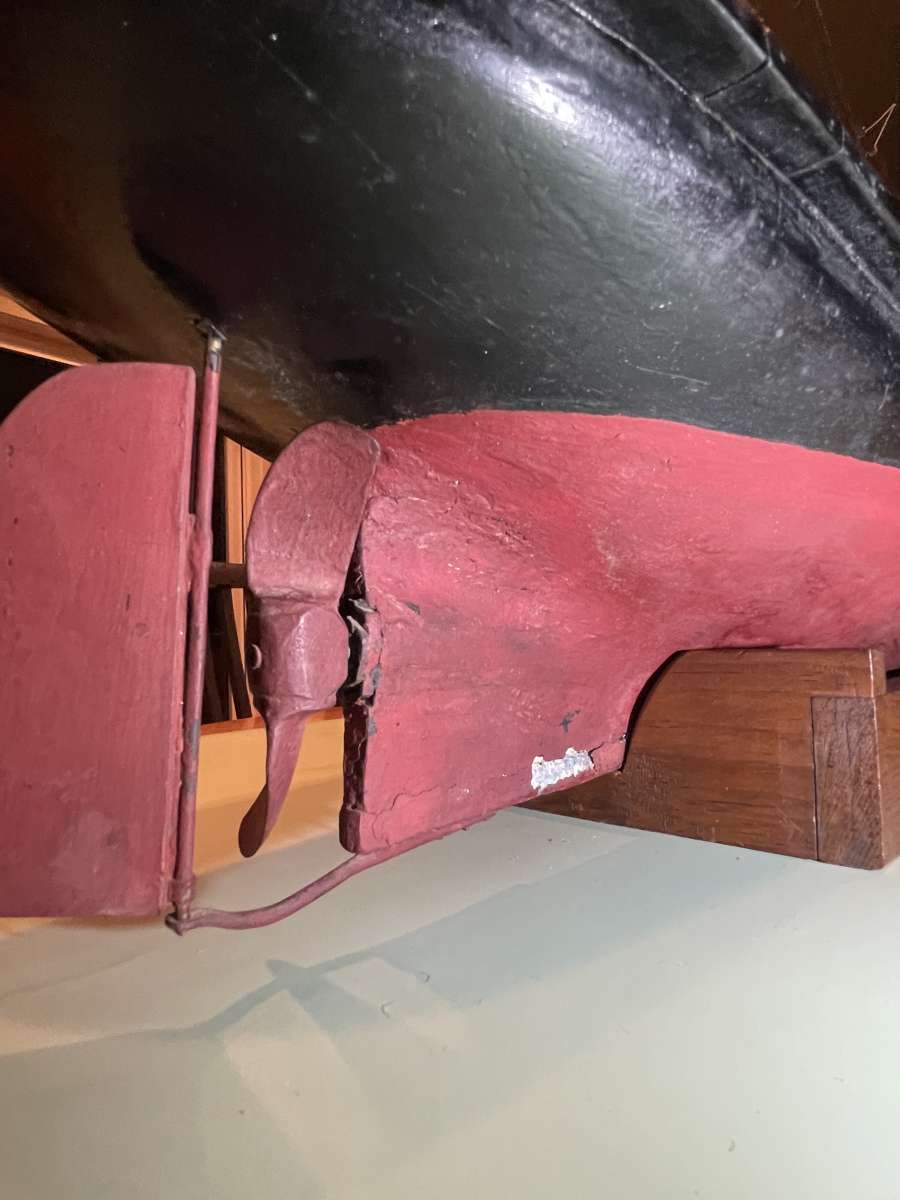
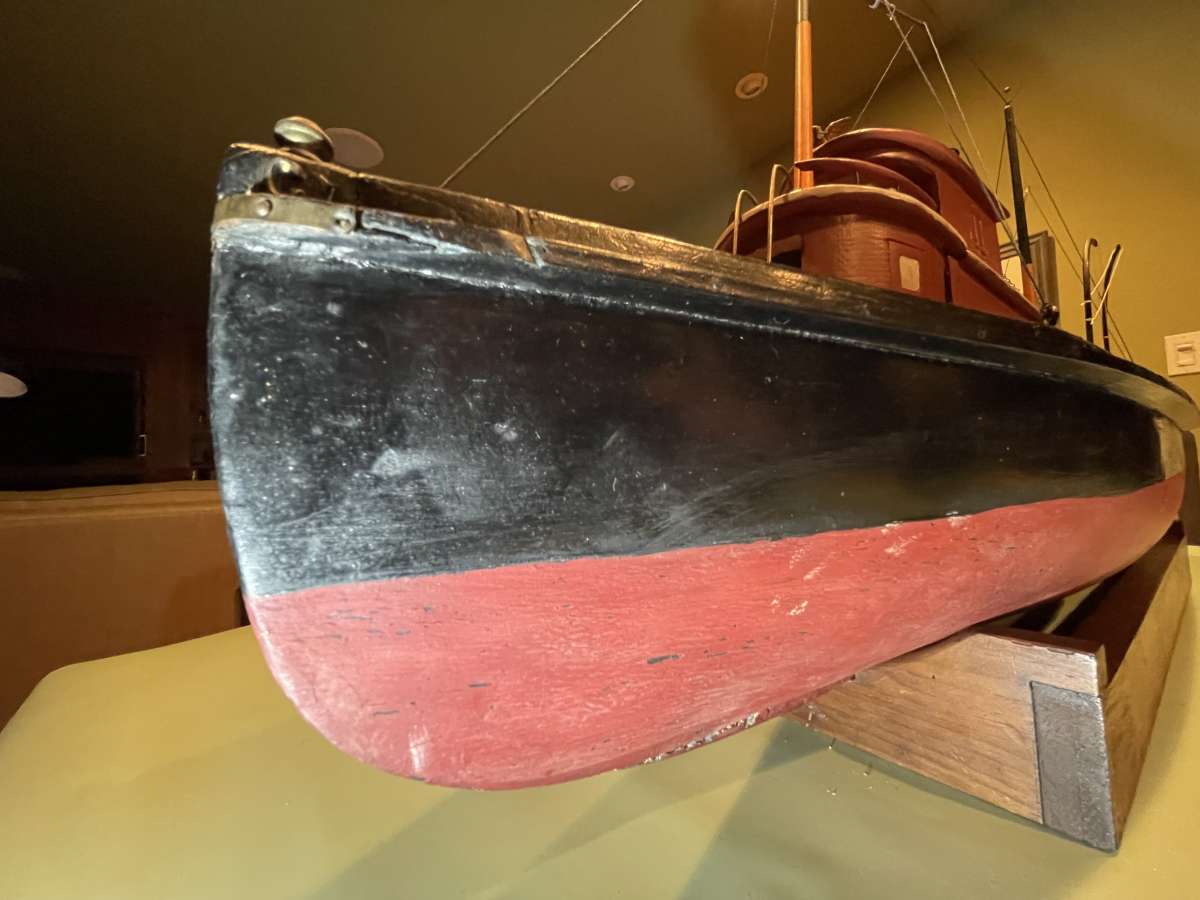
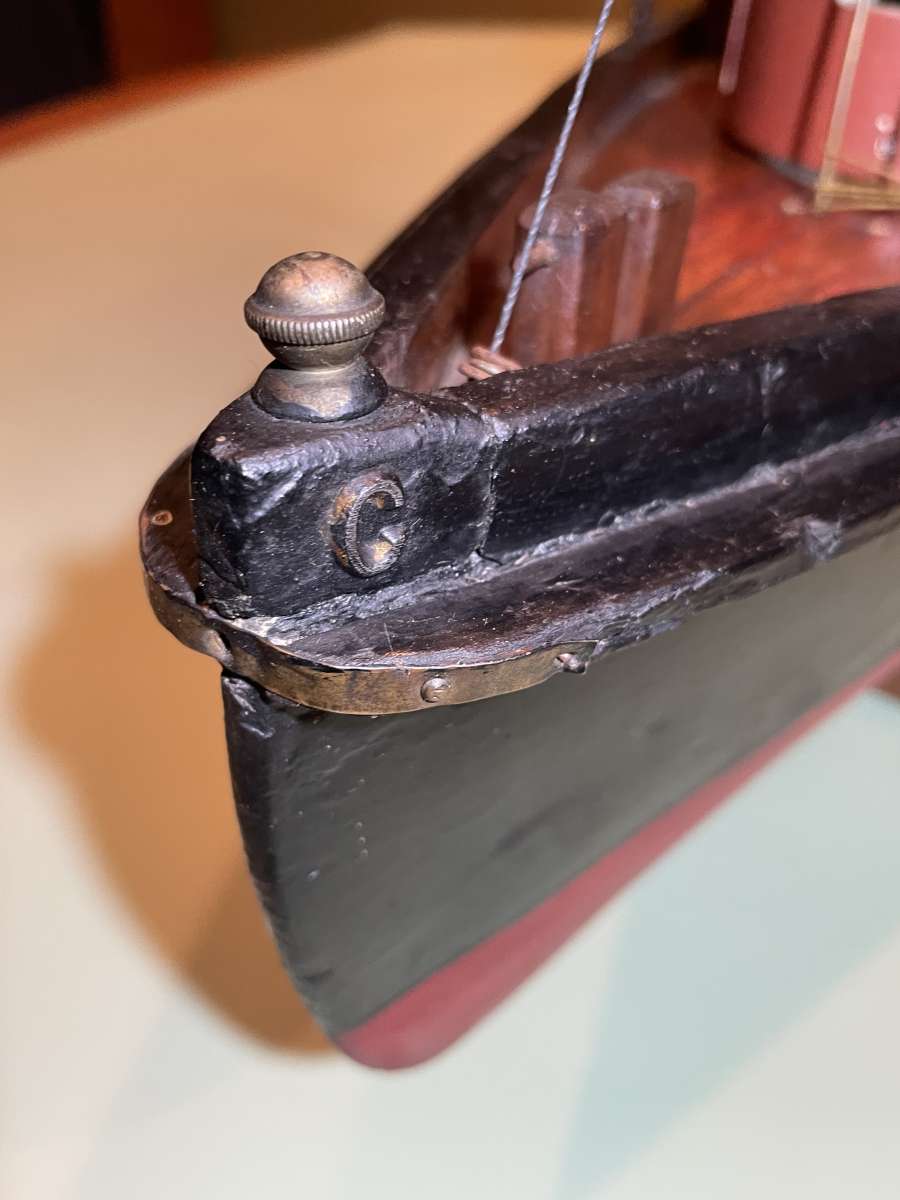
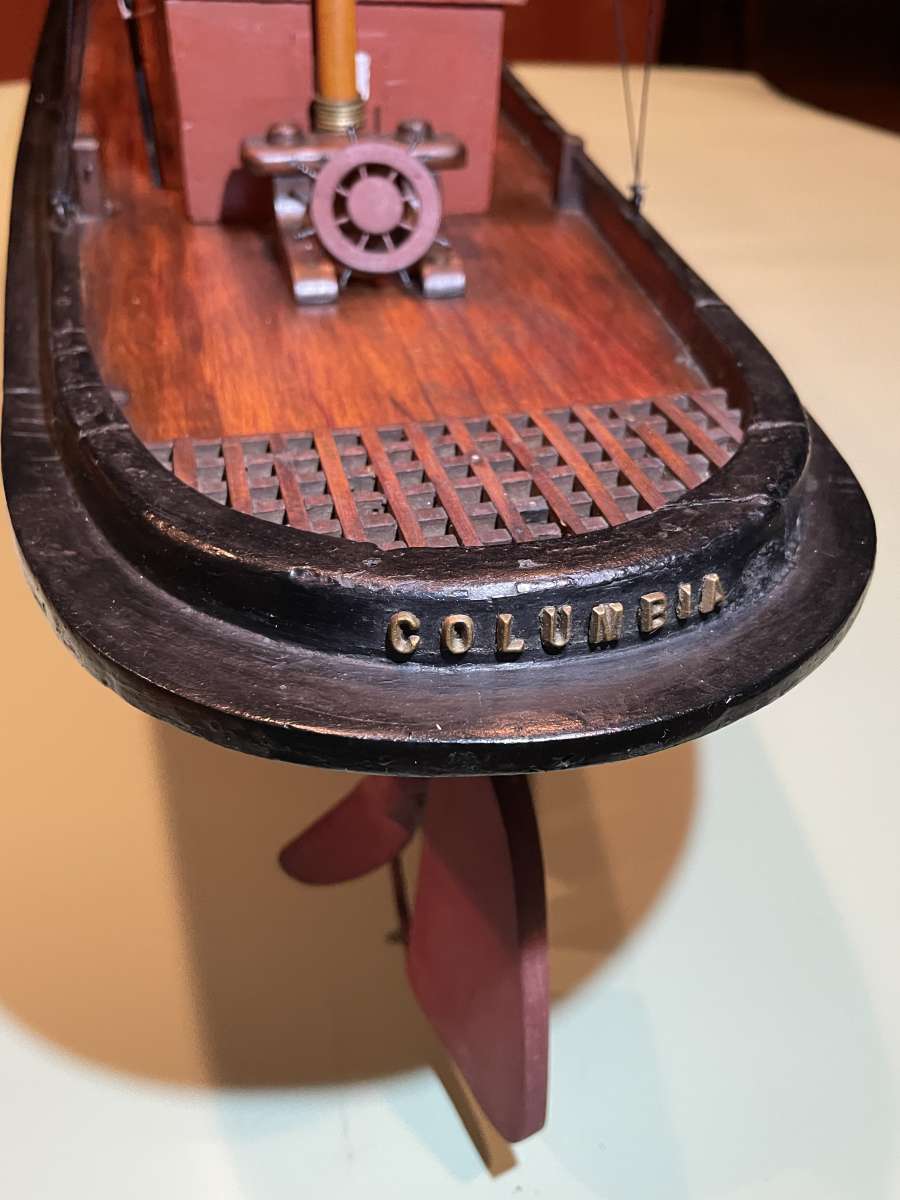
djmounts.


